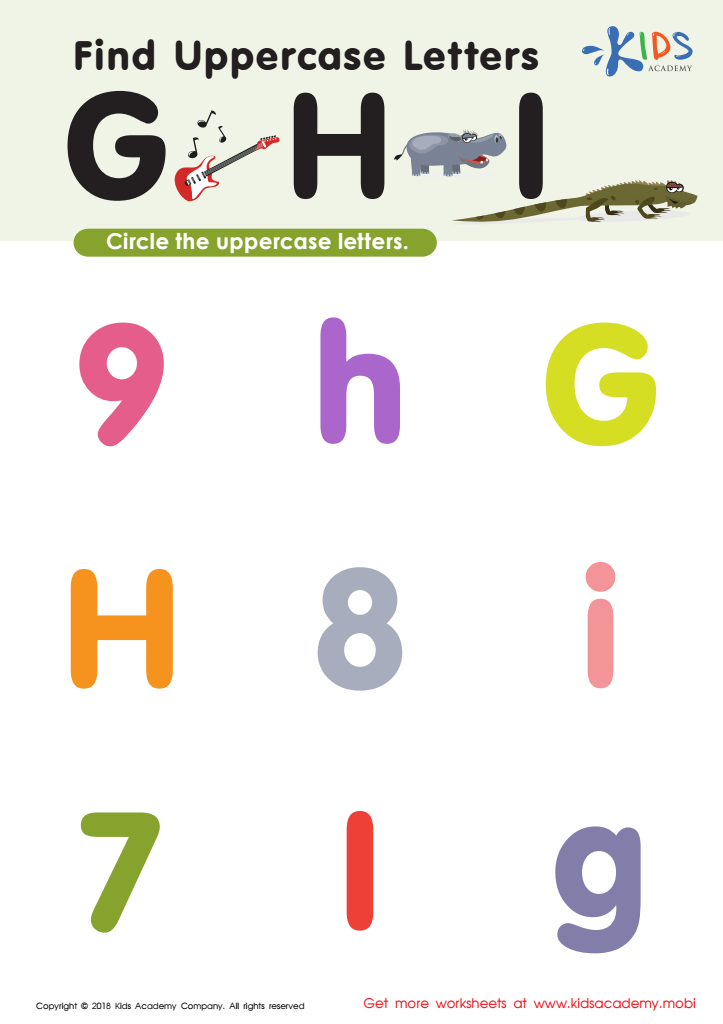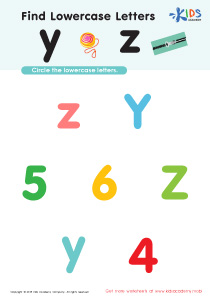Alphabet familiarity Normal Uppercase Letters Worksheets for Ages 4-7
4 filtered results
-
From - To
Boost your child's alphabet familiarity with our engaging Uppercase Letters Worksheets, designed for ages 4-7. These printable activities provide a fun and interactive way for young learners to recognize, trace, and write uppercase letters. Each worksheet encourages creativity while reinforcing important literacy concepts, making learning enjoyable! Perfect for both classroom settings and at-home practice, these resources support children as they strengthen their handwriting and letter identification skills. Dive into the exciting world of letters and set the foundation for reading success—download our Alphabet Familiarity Worksheets today and watch your little one develop confidence in their abilities!


Find Uppercase Letters G, H, and I Worksheet


Find Uppercase Letters Worksheet


Find Uppercase Letters J, K, and L Worksheet


Find Uppercase Letters A, B, and C Worksheet
Alphabet familiarity, particularly with normal uppercase letters, is crucial for children aged 4-7 as it lays the foundation for their literacy development. During this formative stage, children are like sponges, actively absorbing new information. Recognizing uppercase letters helps them start reading and writing, skills that are essential for academic success.
Uppercase letters often appear in books, signs, and digital media, making their recognition pivotal for early reading comprehension. Familiarity with these letters aids in phonics development, allowing children to decipher words and understand the relationship between letters and sounds. This competence not only boosts reading skills but also enhances spelling, as uppercase letters are commonly used at the beginning of sentences and for proper nouns.
Moreover, engaging with uppercase letters builds children's confidence as they transition into formal education. When teachers and parents introduce these letters in fun and interactive ways—through games, songs, and art—they foster a love for learning. In contrast, a lack of familiarity can lead to frustration and disengagement, potentially impacting a child's future academic journey. Therefore, prioritizing uppercase letter recognition is essential for empowering children during these critical early years and setting them on the path to lifelong literacy.
 Assign to My Students
Assign to My Students















